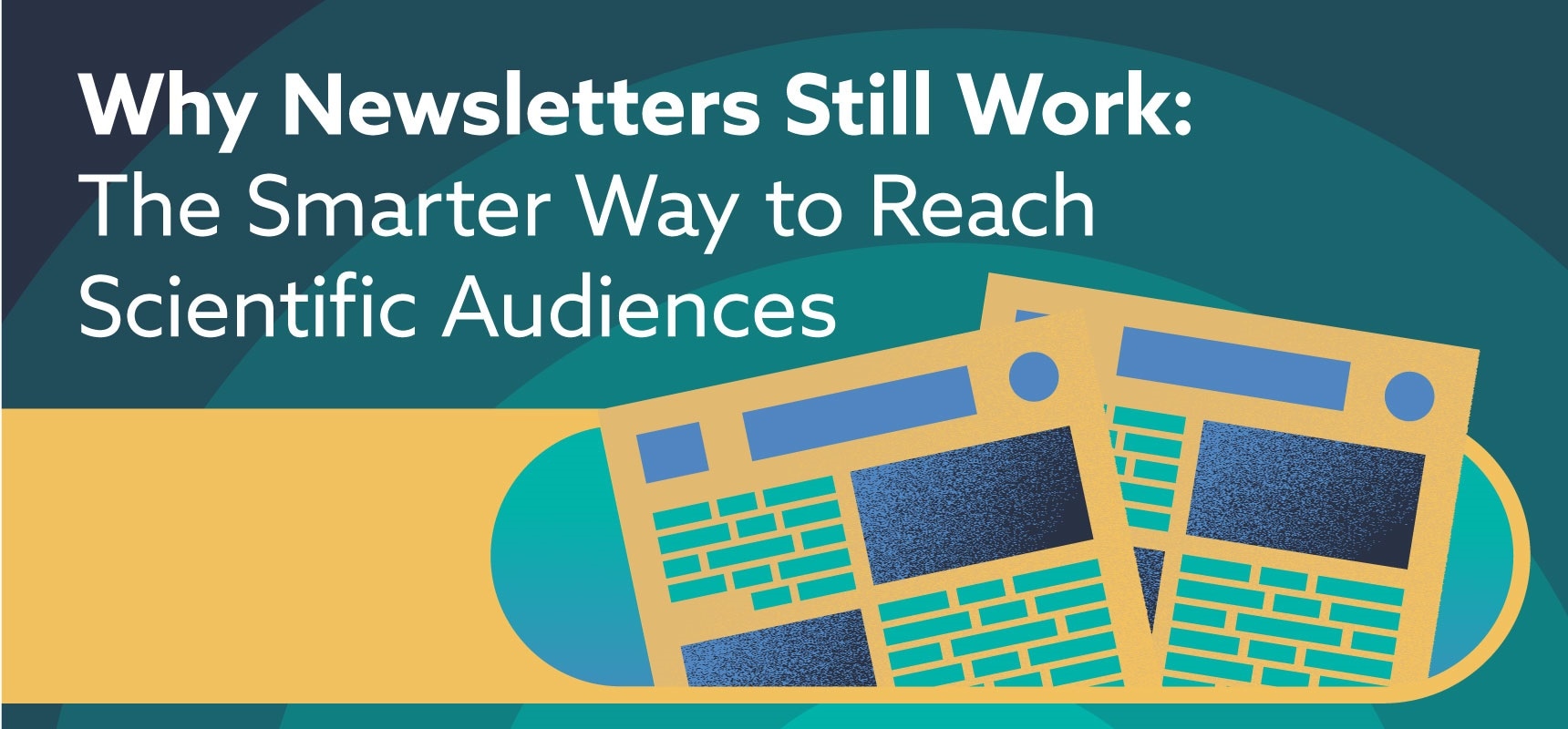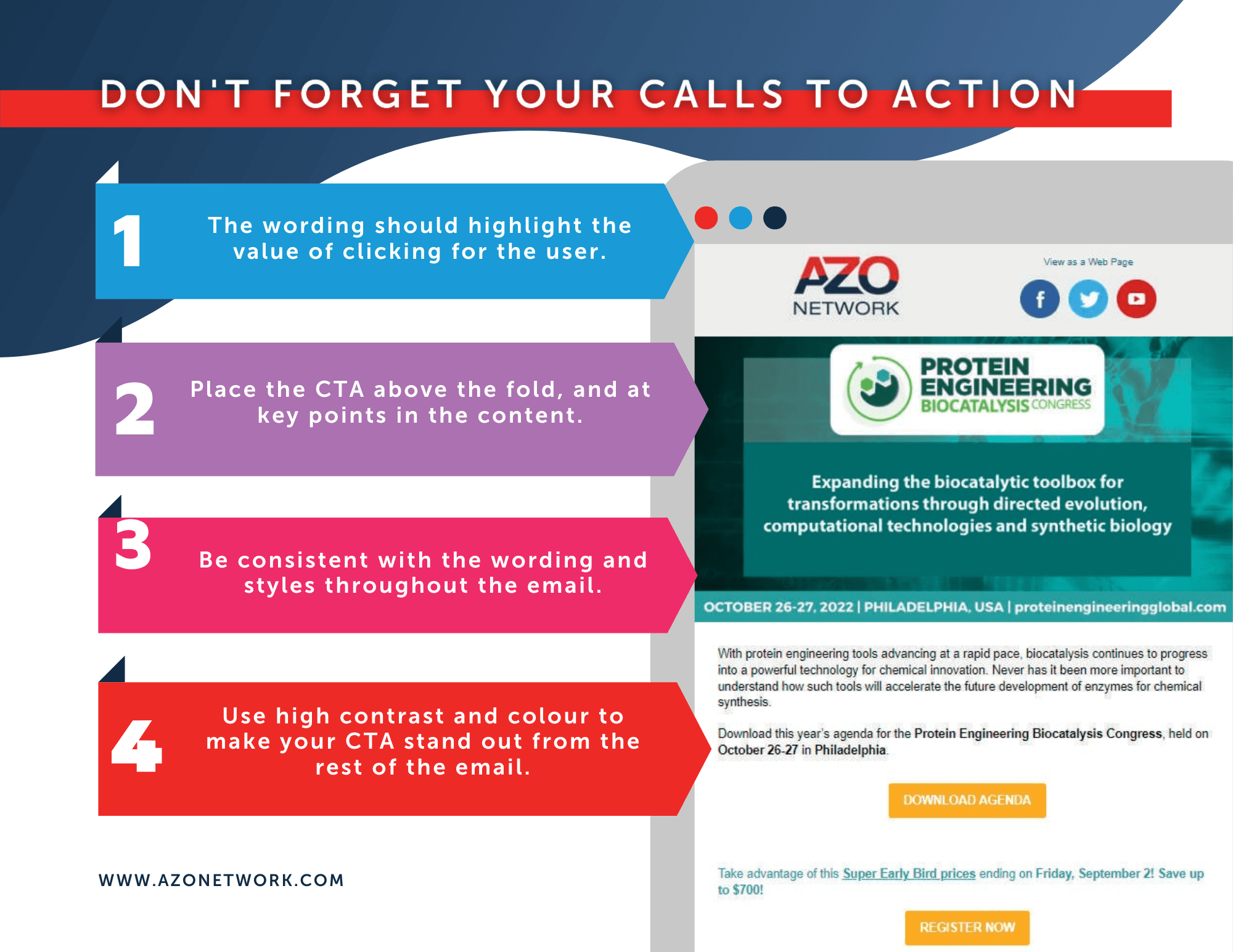
In today’s noisy digital world, it’s easy to assume newsletters have lost their impact. With overflowing inboxes and shrinking attention spans, some marketers have sidelined email in favor of trendier platforms. But that would be a mistake; newsletters remain one of the most effective and reliable tools for engaging professional audiences, particularly in complex fields like science, technology, and healthcare.
In these industries, where decision-making is slow and trust is essential, newsletters offer something rare: direct, sustained access to a highly targeted audience.
In this blog, we’ll explore what newsletters really are, why they still matter in 2025, the common challenges marketing managers face, and how we can help you overcome them.
What Are Newsletters, Really?
A newsletter is more than just an email. At its best, it’s a recurring, branded touchpoint that builds relationships, demonstrates thought leadership, and nudges readers along their buying journey.
The best newsletters include:
- Content curation – both original content and relevant third-party resources. A strong newsletter blends your brand’s expertise with trusted external perspectives. This could include blog posts, whitepapers, webinars, research highlights, or industry news. Providing a mix keeps the content fresh, positions your brand as a helpful curator, and increases the value for readers who rely on you to save them time.
- Consistency – in tone, design, and schedule (weekly or monthly is ideal). Consistency builds recognition and trust. A familiar layout and voice help your newsletter feel like a reliable resource, not just another sales email. Sticking to a regular schedule also sets expectations with your audience and can improve open rates over time.
- Calls-to-action – encouraging deeper engagement, downloads, or contact. Every newsletter should have a clear next step. Strong CTAs guide your readers toward meaningful interaction, turning passive readers into active leads, which is essential for measuring impact beyond opens and clicks.

Email Marketing Guide
Why Newsletters Are Still a Smart Play in 2025
Newsletters are incredibly cost-effective. For every $1 spent on email marketing, the average return is $36. They also give you direct access to your audience, with no algorithms or ad spend required. That’s one reason why 60% of marketers have named email a priority for 2025, up from 55% the previous year.
They are especially powerful in sectors like science, tech, and healthcare, where:
- Sales cycles are long.
- Educational content is essential.
- Trust and credibility drive decision-making
Newsletters keep your brand visible and valuable during every stage of that journey.
Yet despite the benefits, 31% of scientific marketers still don’t run a newsletter, missing out on one of the most cost-effective, direct channels available.
Challenges most scientific marketing managers face
In our latest State of Scientific Marketing Survey, one-third of marketers stated that they find email marketing challenging or very challenging. Why?
- Content creation - Crafting high-quality, relevant content is difficult in technical fields where accuracy and subject credibility matter. It’s not just about filling space, it’s about producing thoughtful, expert-level material that resonates with an educated audience. Many marketers don’t have easy access to scientific writers or curated content.
- Limited time and resources – Marketing teams in these sectors are often small but expected to deliver multi-channel campaigns, lead gen, and sales enablement, leaving little time for developing and maintaining a consistent, high-impact newsletter. Even if the strategic value is clear, they simply fall down the priority list.
- Lack of meaningful metrics – Open and click-through rates only tell part of the story. What’s harder is tracking how a newsletter contributes to brand trust, lead quality, or longer sales cycles. Without clear attribution models or integration with CRM systems, many marketers struggle to prove ROI or secure ongoing investment in newsletters
- List growth and quality – Building a high-quality, opt-in email list in niche scientific fields isn’t easy. You’re often targeting researchers, engineers, or clinicians, audiences who are time-poor and wary of irrelevant content. Ensuring relevance, compliance (e.g. GDPR), and continued quality is an ongoing effort.
- Low engagement rates – Many newsletters suffer from inconsistent timing, poor segmentation, or overly generic messaging. In crowded inboxes, if your content doesn’t offer immediate value or speak directly to your audience’s needs, it gets ignored.
How We Help Marketing Managers Win with Newsletters
We help simplify and supercharge your newsletter efforts:
- Access to nearly 1 million pieces of scientific content to enrich your messaging
- Placement in 140+ subject-specific newsletters across science, tech, and healthcare
- Sponsorship opportunities to appear in trusted emails with built-in audiences
- Support with strategy, content, design, and analytics
AZoNetwork's Newsletter Solutions
We take the heavy lifting off your plate, so you can focus on results.
Turn Newsletters into Your Competitive Advantage
Newsletters are evolving, not disappearing. For marketers in science, technology, and healthcare, they offer a smart, sustainable way to stay top-of-mind with key audiences.
With the right strategy and expert support, newsletters can become one of your most valuable lead generation tools.
Ready to make newsletters work harder for you in 2025? Let’s talk.